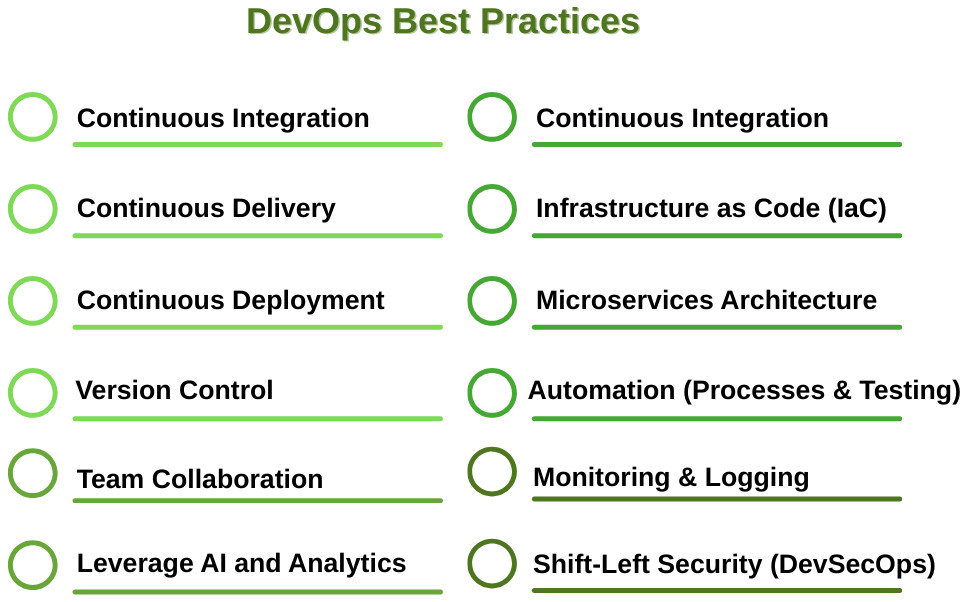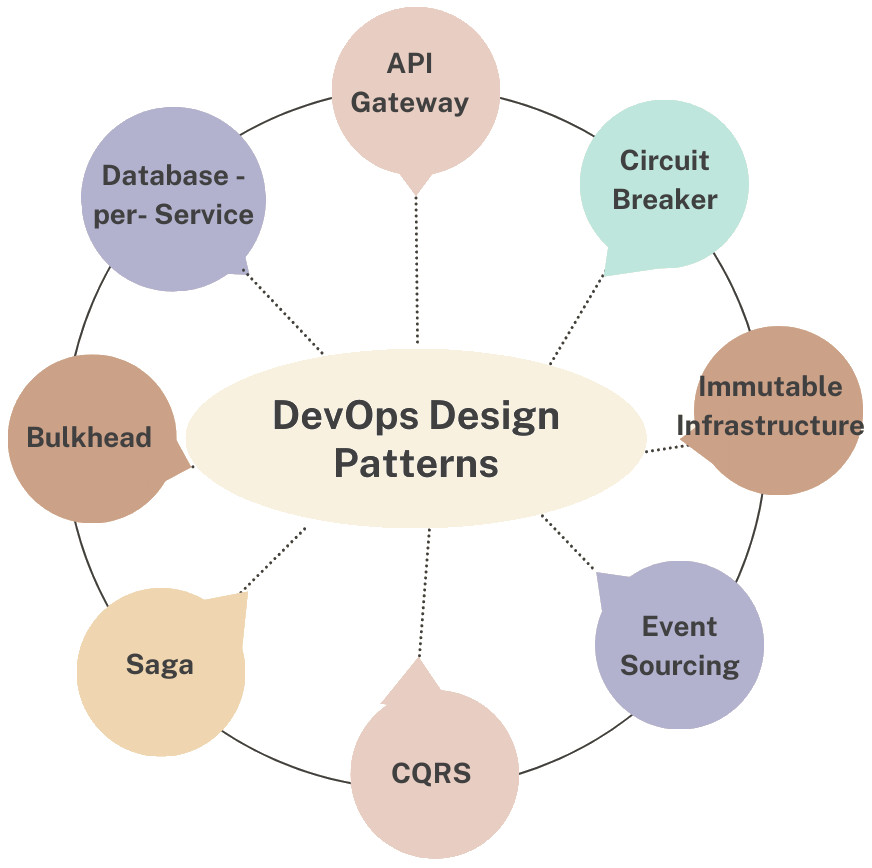DevOps: A Software Architect’s Perspective
|
|
Software architecture is an important part of DevOps practices. It is a foundation for designing, developing, and maintaining software systems. Organizations can improve scalability, flexibility, and maintainability of the applications by adopting right software architecture.
This article explains DevOps from the perspective of a software architect, explaining the implications, responsibilities, and opportunities that DevOps presents.
| Key Takeaways: |
|---|
|

The Evolution of DevOps
DevOps has been introduced to bridge the historical gap between software developers and IT operations. It is a combination of Development and Operations. In traditional software development, developers’ main focus was on building the software, while deployment and infrastructure were left to the operations team. These isolated functions distributed between different teams led to communication breakdowns, deployment bottlenecks, and fragile systems.
The DevOps Principles
The DevOps movement started as a response to these issues by emphasizing the following:
- Collaboration and Communication: DevOps encourages a culture of teamwork and open communication between developers and the operations team.
- Automation: It emphasizes automation at various stages of software development, including build, testing, deployment, and infrastructure management.
- Continuous Integration/Continuous Delivery (CI/CD): DevOps enables faster and more frequent releases by utilizing CI/CD pipelines to automate the building, testing, and deployment processes. Read: DevOps vs. CI/CD
- Infrastructure as Code (IaC): IaC is often used to define and manage infrastructure through code that promotes consistency and automation.
- Monitoring and Logging: This is one of the DevOps practices that helps to identify and address issues quickly.
- Security Integration: DevOps addresses security concerns by integrating security practices throughout the development lifecycle (DevSecOps). Read: DevSecOps vs. DevOps
- Cloud Technologies: DevOps engineers use technologies like AWS, Azure, or Google Cloud for development and deployment.
Thus, DevOps is all about:
- Speed: Faster, efficient software delivery.
- Reliability: Stable, dependable software release.
- Collaboration: Better communication and teamwork.
- Continuous Improvement: Constant iterations and refinement of processes to improve performance.
Considering these features, for software architects, DevOps reshapes modern software systems’ design principles and success criteria.
DevOps Architecture Best Practices

Architectural Implications of DevOps
DevOps introduces a new paradigm and responsibilities from the software architecture point of view. Software architects should consider the following implications or principles of DevOps:
1. Designing for Deployment
Architects must ensure the system is easy to deploy, scale, and monitor in a DevOps-centric environment. Hence, the architecture should have the following characteristics:
- Prefer microservices over monolithic architecture.
- Promote containerization using tools like Docker.
- Facilitate orchestration through platforms like Kubernetes.
- Utilize infrastructure as code (IaC).
With DevOps, the design process includes not just the what and how of a system, but also the where, when, and how often of deployment.
Read: System Design vs. Software Architecture
2. Automation-First Mindset
DevOps strongly advocates automation for faster delivery. Software architects must think beyond manual processes and automate key areas, including:
- Build pipelines (e.g., Jenkins, GitHub Actions)
- Testing Frameworks (unit, integration, end-to-end)
- Release Orchestration
- Rollback and recovery strategies
Automation directly affects the system’s reliability, release frequency, and speed.
Read: Test Orchestration in Automation Testing
3. Resilience and Observability
As DevOps encourages continuous delivery, production changes are frequent and fast. To accommodate this, systems should be:
- Resilient to failures and breakdowns.
- Traceable and observable, with built-in logging, tracing, and metrics mechanisms
- Self-healing with techniques like auto-scaling and circuit breakers
Software architects must ensure that observability and traceability are not an afterthought but a first design concern.
4. Feedback Loops
Rapid and continuous feedback is a cornerstone of DevOps. Software architecture enables:
- End-to-end traceability across pipelines
- Real-time monitoring of user experience and performance.
- Integration of A/B testing, feature flags, and telemetry-driven insights
Effective feedback helps with better architectural decisions and ensures continuous improvement.
Role of a Software Architect in DevOps
The traditional software architect role has significantly transformed in the DevOps era. A software architect in a DevOps environment is responsible for designing, developing, and implementing the overall DevOps strategy, with a focus on streamlining development and deployment processes.
Their role involves designing and implementing CI/CD pipelines, selecting appropriate tools, and ensuring the infrastructure aligns with business objectives. Here are the responsibilities of a software architect in a DevOps environment:
1. DevOps Pipeline Design and Implementation
A software architect in a DevOps environment: what are the DevOps design principles
- Designs and implements the end-to-end DevOps Pipeline.
- Implements CI/CD processes.
- Selects appropriate tools and technologies for automation, IaC, and monitoring.
2. Technology Stewardship
Software architects as technology stewards must encourage the use of technologies and frameworks that support:
- Cloud-native development
- API-first integration
- Event-driven architecture
- Serverless computing
Chosen frameworks and technologies directly impact agility, scalability, and maintainability of the system. They are also responsible for managing IaC, using code to define and manage infrastructure, automate deployment, and ensure consistency.
3. Governance and Standardization
In DevOps, autonomous teams work in parallel, due to which architectural governance is essential. For this, software architects must:
- Define standards and guidelines
- Encourage modular design and reuse of code
- Establish monitoring and logging solutions to track system performance
- Implement an incident response mechanism to minimize downtime and quickly respond to incidents.
- Ensure security and compliance practices are integrated throughout the DevOps pipeline (DevSecOps).
4. Mentoring and Cross-functional Leadership
Software architects also perform an important role of mentoring teams and cross-functional leadership that involves:
- Designing for failure and resiliency
- Implementing an effective CI/CD pipeline
- Building for observability and testability
- Provide guidance on technical decisions and choose an architecture to ensure it aligns with business goals and future scalability
- Act as a bridge across various teams, such as development, QA, security, and operations, to facilitate collaboration and encourage a culture of shared responsibility.
5. Continuous Improvement Advocates
In line with DevOps, software architects should promote:
- Post-incident reviews to find out the cause and decide on future prevention.
- Technical debt tracking
- System health checks and audits to ensure no failures or disruptions occur in the system.
In addition, they should also drive continuous improvement initiatives, seek ways to optimize the DevOps pipeline, and enhance software reliability and delivery speed.
DevOps Design Patterns
In a strategic move, DevOps teams integrate microservices architecture design patterns into CI/CD pipelines. It starts with automated deployment to smoothly handle the frequent, incremental updates intrinsic to microservices. There should be a strong alignment between DevOps practices and the microservices architecture. This ensures a more efficient, resilient, responsive development and deployment workflow.
Microservice Architecture Benefits
Some of the benefits of microservices architecture are:
- Each microservice is deployed independently.
- Since services are independent, faults are isolated.
- Teams are autonomous.
Microservice Architecture Challenges
Challenges faced by microservices architecture are:
- The coordination between various services is complex.
- Developers face complexities in data consistency and versioning.
Design Patterns to Overcome the Challenges of Microservice Architecture
To overcome these issues with microservices architecture for DevOps, there are various design patterns that are used, as discussed below:

1. API Gateway Pattern
An API gateway acts as a front door (unified entry point) for all client interactions with microservices. The main functions of the API gateway include aggregating requests from various clients, directing them to the appropriate microservice, and compiling the responses.
API gateway pattern simplifies client-side experiences by offering a unified interface with independent services.
API gateway pattern decouples clients from internal microservices and is beneficial in managing cross-cutting concerns such as logging, authentication, and SSL termination.
Read: API Testing Checklist
2. Circuit Breaker Pattern
This pattern serves as a safety switch for the network. This pattern prevents strain on the system and its potential failure by breaking a circuit whenever a service call fails repeatedly. Then it allows controlled recovery by periodically checking for resolution. This pattern gracefully handles the service disruptions thus enhancing system resilience.
3. Immutable Infrastructure
The immutable infrastructure pattern ensures predictable and consistent deployments by treating infrastructure as code (IaC) and promoting statelessness. This pattern is used for rebuilding instead of patching. Several DevOps tools, such as Terraform, CloudFormation, and Ansible, support the immutable infrastructure pattern.
4. Event Sourcing
In the event sourcing pattern, changes in a system’s state are recorded as a series of events. This pattern logs the complete series of actions that led to a particular state, instead of just storing the current state. The event sourcing approach provides a reliable audit trail and helps simplify complex transactions and error recovery.
5. Command Query Responsibility Segregation (CQRS)
CQRS divides database operations into commands (which modify data) and queries (which read data). This separation helps with optimization of data storage and performance as it independently scales the read and write workload. This pattern is suitable in systems where read and write volumes vary significantly.
6. Saga
This pattern breaks complex transactions across multiple microservices int smaller, manageable operations. The part of the transaction is then handled by each service to which it belongs. This approach aids in data consistency without tight coupling as it allows for distributed transactions. It helps maintain the autonomy of each microservice.
7. Bulkhead
The bulkhead pattern limits failures to a single service or a group of services. This way, if one part overloads or fails, the others continue to function, as the bulkhead pattern isolates parts of the application. Bulkhead pattern improves system resilience and fault tolerance.
8. Database-per-service
As the name suggests, in this pattern, each microservice has a dedicated database. This arrangement prevents database calls from one service from impacting others. This pattern encourages loose coupling and high cohesion, making services more resilient to change, easier to scale, and maintain.
DevSecOps: Security as a Design Principle
Software architects also have to ensure that security is integrated into every stage of development (DevSecOps) and not just at the end of the DevOps pipeline. A software architect plays a vital role in DevOps security by:
- Ensuring threat modeling during design
- Implementing static and dynamic code analysis
- Ensuring secret management and encryption
- Allowing runtime security checks
Software architect also helps with the adoption of zero trust models, least privilege access, and auditing mechanisms into DevOps.
Cultural Shifts and Organizational Impact
Apart from architecture, tools, and technologies, it is essential for software architecture to also consider culture. Software architects adopt cultural shift in the following ways:
- Embrace Collaboration: Architects must collaborate across teams and departments, aligning closely with:
- Product owners to understand goals
- QA engineers to define test strategies
- Operations teams to ensure smooth releases
- Blameless Postmortems: Architects are responsible for encouraging a no-blame culture where failures are perceived as learning opportunities. This leads to more honest root cause analysis and systemic improvements.
- Empower Teams: DevOps encourages autonomy. Architects must trust teams to make correct decisions while providing guidance and guardrails through reference architectures and playbooks.
Key Metrics Software Architects Should Track
Software architects should monitor the following metrics to evaluate DevOps effectiveness:
- Lead time (code commit to production)
- Deployment frequency
- Change failure rate
- Mean time to recovery (MTTR)
- System uptime and error rates
These metrics ensure the health of the system and the delivery pipeline and enable architects to act proactively if need be.
Common Drawbacks and How to Avoid Them
Despite the benefits, DevOps adoption can falter at times. Common pitfalls include:
- Tool Overload: Overengineering of the toolchain leads to system complexity. Software architects should opt for a minimal viable toolset and focus on integration.
- Lack of Ownership: DevOps becomes superficial unless teams take ownership of the entire lifecycle. The mindset “You build it, you run it” is a good option that software architects should adopt to encourage ownership.
- Ignoring Legacy Systems: Legacy systems still used in many organizations may affect the DevOps performance. Software architects should ignore legacy systems by enabling incremental modernization such as wrapping legacy code in APIs, gradually migrating to cloud, or using strangler patterns.
Future Outlook
The DevOps landscape continues to evolve with the following future trends:
- AI/ML in DevOps (AIOps) for predictive analysis and anomaly detection. Read: What is AIOps?
- GitOps, using Git as the source of truth for infrastructure.
- Platform Engineering, providing self-service platforms for developers.
- Policy-as-code to ensure compliance in real-time.
Software architects are expected to continuously learn and adapt to technological and cultural changes to stay ahead of the curve.
Conclusion
DevOps is a philosophy that influences how systems are designed, developed, operated, and deployed. Software architects should shift their mindset from isolated design work to holistic lifecycle thinking. Gone are the days when software architects had to just design the system and leave everything to other teams.
In DevOps environments, software architect becomes a coach, a collaborator, a technologist, and a facilitator of continuous value delivery. Architects can buld robust, scalable, and agile systems by aligning architectural decisions with DevOps principles.
| Achieve More Than 90% Test Automation | |
| Step by Step Walkthroughs and Help | |
| 14 Day Free Trial, Cancel Anytime |












